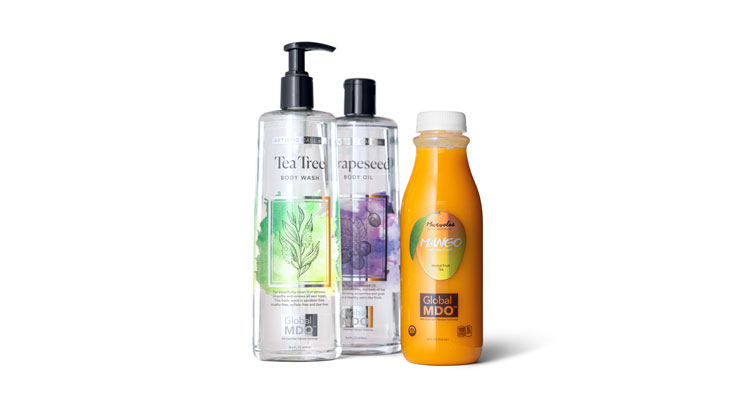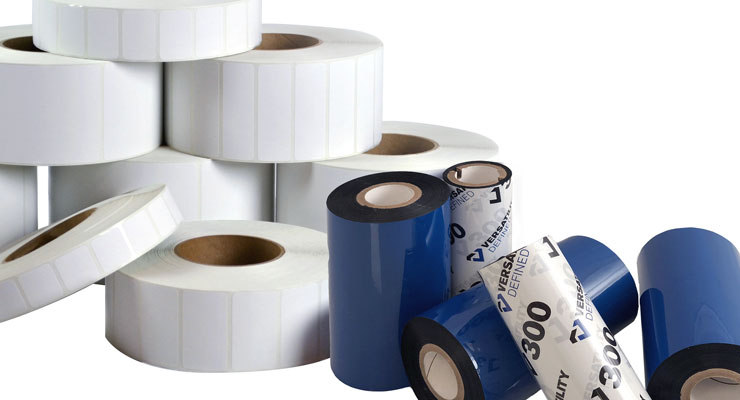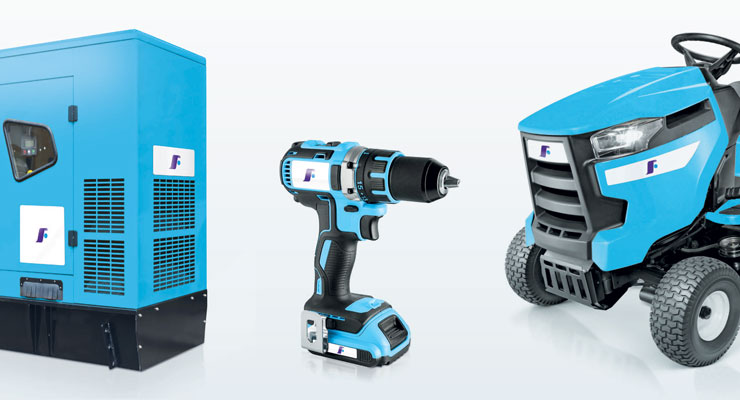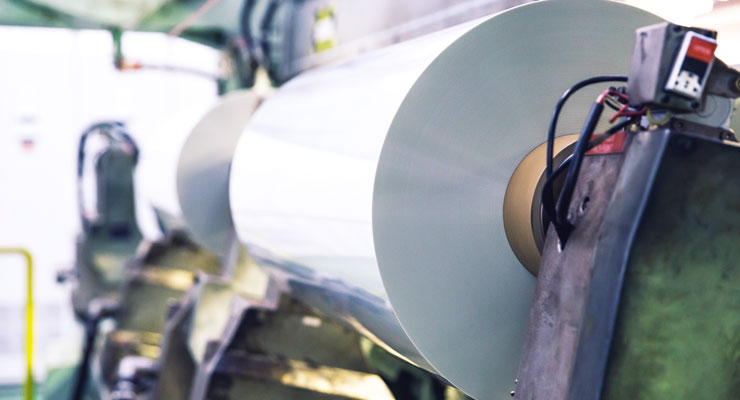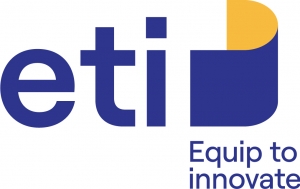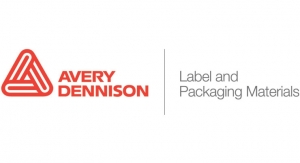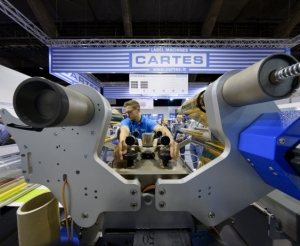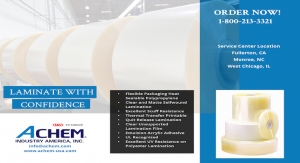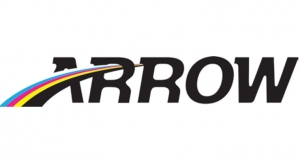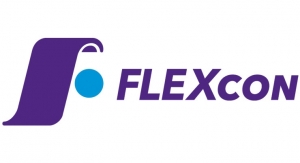Greg Hrinya, Editor07.16.21
As brands try to stand out on crowded shelves, they frequently rely on new and innovative materials to catch the consumer’s eye. Even though papers are still considered the predominant labeling material, films are growing by leaps and bounds.
According to Alexander Watson Associates, films made up 25% of the pressure sensitive label market globally in 2020, with paper accounting for the other 75%. However, filmic facestocks are growing at a higher rate than paper. BOPP films are the most popular, but depending on performance requirements, a polyethylene, polyester or vinyl may be more appropriate. Film release liners have also increased in popularity due to their ease of converting and the ability to create effects such as the no-label look with clear films.
“For the packaging market, creating shelf appeal through distinctive aesthetics is the primary goal, such as achieving a no-label or frosty look, as well as sharp image quality,” comments Dan Riendeau, strategic business unit manager, packaging, FLEXcon. “Secondly, ensuring resistance to common exposures, such as product contents and humid environments, are important to having the package look just as good on the day it’s discarded as the day it was purchased.”
Wausau Coated Products has seen the trend toward films first-hand. “More than 60% of our products sold now include a film in one format or another,” states Cheryl Bahr, strategic business development manager. “Thirty years ago, that number was more like 10%.”
Converters often opt for films when trying to give brands that no-label look, which is intended to provide transparency, or a window into the product. Films have also been engineered to meet the latest industry trends, namely digital printing and sustainability. The entire supply chain, from suppliers to the brand, is looking for ways to reduce environmental impact. This can provide savings while also lowering the carbon footprint.
“Films are getting thinner and thinner to be more sustainable and cost competitive,” states Kim Hensley, senior marketing manager, Mactac North America. “The 2.6 mil white polypropylene has been the standard for years, but now lower gauge versions, such as 2.4 mil and 1.6 mil, are taking over to improve economics and sustainability. The standard 2.0 mil clear polypropylene, often used for no-label look applications, is moving to 1.6 mil, and is being used in wines, premium beers, soft drinks and other beverages, replacing wet glue-applied paper labels. 1.2 mil polyester liners are moving to .92 gauge liners, and 40# liners are moving to 1.6 mil, like our hi.mpact glassine liner, that offers a stronger diecutting surface with less dust and debris. Lower gauge films result in more labels per roll, less changeover because of more msi per roll diameter, freight savings, less inventory space and smaller rolls.”
Over the last several years, concerns about the impact of discarded plastics on the environment have become of great concern to consumers. This includes worries about chemicals contained in products that can leach into groundwater, as well as the sheer quantity of plastics going into landfills and the ocean. “In response, film suppliers have removed numerous chemicals from their products,” explains Lori Bitar, product marketing manager, Healthcare, FLEXcon. “They are also producing thinner gauged films and release liners to lower the total amount of plastic being used.”
According to UPM Raflatac, sustainability is the main trend in the market. “As consumers increasingly show that they care about sustainability and are willing to pay more for it, film labeling is enabling brands to create sustainable brand narratives and take action for a more sustainable future. From optimized material usage to increased use of recycled content, to sustainable bio-based feedstock, films have responded to the evolving challenges and needs of today’s marketplace,” explains Peeyush Tripathi, technology platform manager, Films & Specials, UPM Raflatac Americas.
“Overall, films are perceived as not being environmentally friendly, but there is a push to recycle them. One of Mobil’s priorities, for example, was to be able to recycle their film for things like park benches, golf tees and more,” says Bahr. “I want to advocate for the recovery and recycling of PET filmic release liner, too. In the US, we now have sites paying for collected, sorted PET release liner. Getting your by-product and waste hauler to transport your customers’ spent liner to circular polymers or similar sites avoids landfill, plus gives your customers a positive income plus circular economy message to spread. More information on this topic is available through TLMI or CELAB.”
The technology has evolved in other ways, too. “BOPP films are evolving as new resins are introduced and new technologies emerge related to process derivatives, inline coatings, extrusion coatings, and other surface enhancements such as metalization,” details Gregg Ockun, new market development manager, Toray Plastics (America), Inc. “BOPP films need to keep pace with the changing requirements of the PSL market. Coating technology is especially important now. For example, Toray has developed coatings for improved print performance, ink adhesion, and for compatibility with emulsion, solvent, and hot-melt adhesives.”
Toray coatings have been created to provide improved moisture- and oxygen-barrier properties for special re-closure (non-zipper) applications. The company is able to combine different surface enhancements to meet the requirements of some applications. One such example is a coated metalized film that provides a high-gloss surface for printing that creates a more attractive label than one that is printed on the non-metalized skin layer.
“Another challenge is ink adhesion performance, and that is why advanced coating technology is critical,” adds Ockun. “That is especially true for the digital label printer and those who are interested in transitioning to mono-web roll fed applications. Both will likely want the kind of robust ink anchorage that is made possible with certain advanced coating technologies.”
According to Mactac’s Hensley, films are advantageous for numerous applications, more so than its paper counterparts. Beer, wine and spirits brands may prefer a no-label look in order to see the product inside or to match the color of the container, while cosmetics and healthcare products might require durability in bathroom environments with additional moisture resistance. Films are also great for moist environments or food applications with frost. Extended content labels benefit from tear resistance and durability for multiple uses, commonly seen in films as well.
Toray’s Ockun says BOPP film is preferred for pressure sensitive labels that are used in specialty re-closure packaging, a non-zipper category that is specified for household goods, wet wipes, moist towelettes, snacks, cookies, and meat and cheese packs. The film provides good functionality, package integrity, versatility of appearance (clear, white or metal), a variety of compatible adhesives, and barrier if required.
“In terms of processing, BOPP films, which are oriented in both the machine and the transverse direction, offer the distinct feature of high-tensile strength that provides improved stiffness and rigidity and allows for thinner films to be dispensed properly at high speeds,” comments Ockun. “BOPP film is also compatible with a broad range of print technologies: flexographic water, solvent, and UV (energy curable) based inks, rotogravure, and digital. BOPP films are also more resistant to web breaks during converting.
“Another critical advantage to be gained with the use of BOPP film for a label is its ability to withstand breakage when subjected to a drop test,” he adds. “That is not usually true with paper labels. The benefit is especially desirable for large, multi-serve beverage containers. If they’re dropped, the impact will cause the bottles to expand and place stress on the label.”
In the future, films will continue to play a large role in fighting counterfeit goods. According to FLEXcon, strides have been made in the development of tamper-evident features to aid in the prevention of counterfeiting, particularly in the electronics and pharmaceutical markets. These can include holographic films, destructible and semi-destructible films, fluorescing adhesives, micro-taggants and more, to offer a full range of overt, covert and forensic solutions.
Conformability is also critical when selecting films. Avery Dennison offers a broad range of labels in the beer/beverage, personal care and beauty market segments. Depending on the substrate or container on which the label is applied, the company has products for rigid, semi-squeeze and full squeeze applications.
“Common challenges can be found when the right label and/or adhesive are not selected,” remarks Chrissy Betsa, product manager of conformable films, Avery Dennison Label and Packaging Materials. “The shape of the container and amount of squeeze needed will drive the level of conformability needed. From the adhesive side, the type of container drives which adhesive will properly promote label adhesion.”
Paper versus film
Much like how flexo and digital each have their place, so too do papers and films. Certain applications are better suited for one or the other. At UPM Raflatac, the company strives to match the right material to the customer’s unique requirements.
“Our approach really is to take a look at the primary packaging construction and match up the best label substrate, especially when packaging recyclability needs to be considered,” explains Jeff Buchanan, director of paper laminates, UPM Raflatac Americas. “Sometimes paper is best, while other times a film label might be a better option. For example, a cardboard box with a standard paper label can be recycled in the current paper recycling processes. As well, flexible plastic packaging with paper labels can be considered recyclable when the main flexible packaging material is recyclable. Paper labels can have an impact on plastic packaging recyclate yield by increasing the risk of some contamination but typically with minor impacts.”
For durable applications, FLEXcon’s Ross Hodnett, product marketing manager, Durables, says paper simply can’t stand up to the harsh environments to which labels are exposed. These environments include chemical exposures, outdoor environments, abrasion and more, making films “the only option.”
“Polyesters are often the film of choice due to their ability to endure higher temperatures such as those found in automotive and industrial applications,” he adds. “For extreme high-temperatures and caustic chemical exposure, such as with printed circuit boards, polyimides are often necessary as they will not break down in these environments.”
When it comes to high temperatures, careful choice of both the base film and overlaminate is crucial. “They must both be able to stand up to expected temperatures,” notes Hodnett. “Polypropylenes can withstand temperatures up to 212ºF, polyesters can go to 302ºF, and polyimides are needed for environments that may reach up to 750ºF or higher. Of course, given enough time and exposure, any label will eventually break down. The key is identifying a combination that can last the expected lifetime of the product.”
“Films are most commonly used over paper when the end user needs high quality print and/or more durability against moisture, chemicals, and harsh conditions in which a standard paper might not perform well,” adds Joel Ulrich, Roll Product marketing manager, Spinnaker Coating.
According to FLEXcon’s Bitar, films are the preferred choice for pharmaceutical applications versus paper, as well. “Fibers from the paper can cause a build-up of debris in the converting and application process, so paper is not recommended in clean-room environments,” says Bitar. “Films can better withstand harsh conditions, such as water baths or other sources of moisture and condensation, and are also a better choice to employ security or tamper-evident features as compared to paper.”
Pandemic effect
The supply chain for filmic materials felt the brunt of the Covid-19 pandemic, much like many other industries across the globe. The pandemic has created significant challenges and changes in consumer habits, which has led suppliers to tailor needs to shifts within the market.
“The most significant challenge for the beverage market has been the impact of people staying home due to the pandemic,” explains Avery Dennison’s Betsa. “On-premise drinking has declined, and off-premise drinking has increased with more customers bringing products home. Consumers are also trying new things, which is affecting traditional brand loyalty.
“A challenge we have encountered in the health and personal care market is a slight decline in beauty products due to the pandemic,” adds Betsa. “This is being caused by consumers shifting their focus to personal health and wellness. We find direct correlation to the increase of consumers purchasing hand sanitizer, household cleaning items, soaps, etc.”
Many of Wausau Coated’s newest films are part of its Inkjet Product line, where pliable or durable core materials are desired. “Film liners were very important for medical applications, which have played a major role during the pandemic,” says Wausau’s Bahr. “We also use a great deal of films for our packaging products now, primarily for stand-up pouch applications. The nutraceutical and cannabis industries are currently causing strong demand for metalized and holographic filmic labels, which has stressed global supply lines. We expect recovery when more capacity comes online next year.”
UPM Raflatac excelled during the pandemic, continuing to meet demand for filmic and paper materials. “We are very proud of our supply chain team and how they navigated the pandemic,” notes UPM Raflatac’s Buchanan. “Through a lot of hard work and dedication, we minimized the supply chain impacts felt by our customers. Throughout the pandemic, most label material suppliers had longer lead times than we all would have liked, but our suppliers have been resilient in their performance and there have been many examples of great partnerships over the last year. Now, we have been implementing measures over the last several months that put us in a better position for the regular seasonal surge, on top of the demand we are seeing now. We appreciate the performance of our suppliers during this period. They have kept up with our demands and have allowed us to keep our customers supplied.”
Parsing products
Even thoughout the Covid-19 pandemic, substrate suppliers have continued to engineer new materials to meet customer demand.
Avery Dennison, for example, has unveiled Global MDO Next Generation Clear, which is the company’s semi-squeeze film known for enhanced print surface and better clarity. Meanwhile, the popular CleanFlake adhesive adheres the label to a PET bottle until the cohesive bond is broken at the recycler. Recycled Content Liner that contains 30% recycled post-consumer waste (PCW) from PET bottles is a staple for Avery Dennison, as well. The company’s APR recognition for HDPE recycling provides personal care and beauty product brands validation that its labels stay with the container without impacting the recycling process.
FLEXcon has launched a host of new products to meet consumer demand for performance and sustainability. FLEXcon’s optiFLEX ecoFOCUS product line was designed to enable the recyclability of PET containers. The V-52RE adhesive separates from the PET flake during the reclaiming process, allowing for the collection of clean rPET. Available in clear, white and silver BOPP, optiFLEX ecoFOCUS boasts a robust topcoat compatible with multiple print technologies to ensure excellent image quality, and the TRACrite polyester release liner contains up to 60% post-industrial recycled content.
Meanwhile, FLEXcon’s NEXgen durable labeling products offer cross-platform printability to reduce complexity for printers and make product selection and UL adoptions easier. “FLEXcon NEXgen utilizes our highest performing product components, including polyester, polypropylene and vinyl films, with a choice of gloss or matte topcoat and one of three robust adhesives on a roll- or sheet-form liner,” says Hodnett. “Compatibility with both conventional and digital print technologies allows printers to maximize their assets to achieve greater efficiency and cost savings.”
“FLEXcon is also set to enhance its PHARMcal product line for pharmaceutical labeling in late Q3,” notes Bitar. Offerings include high performance materials for labeling small diameter ethical drugs, over-the-counter drugs, cryogenic sample identification, blood management track and trace labeling, and tamper-evident labeling, as well as opaque materials for clinical trials.
Mactac is moving to thinner films and liners. The company has also just launched its newest environmentally-friendly labeling product – Bloom hi•mpact.
“Not only is this better for the environment, it delivers significant efficiencies to manufacturing, converting, shipping, transportation and warehousing – saving costs and increasing profitability for converters and end users alike,” says Mactac’s Hensley. “Bloom hi•mpact delivers only the best in performance and convertibility. This exciting new product features a smoother liner that gives you better laydown of silicone and adhesive. It is also a harder diecutting surface. All these enhancements lead to better converting, matrix stripping and dispensing.”
Spinnaker Coating relies on films for a large portion of its product offerings. The company provides a robust line of thermal transfer printable films, as well as a variety for product combinations that are ideally suited for more durable and demanding applications. These include products for drum label and industrial environments.
“Our latest film option is our 2.6 mil White Pearlized BOPP,” states Spinnaker’s Ulrich. “This is a white, topcoated, multi-layer polypropylene film that offers great performance and excellent printability across many primary and secondary printing technologies. Common applications for our products include food and beverage, health and beauty, retail, durable labels, and household and detergents.”
Toray Plastics (America) is conducting R&D with an eye on sustainability, as well. “Sustainability has a primary role in the films space at Toray Plastics (America). We are a subsidiary of the Toray Group, which has stated its belief that sustainability is the most important global issue of the 21st century,” explains Toray’s Ockun. “We hold that it is our responsibility to deliver innovative technologies and advanced materials that provide real solutions to the challenges the world faces. … That said, in terms of labels, the sector’s focus has been on the ability to remove the label and recycle the container. BOPP film performs well in the recycling stream because it can be washed off and collected. The Association of Plastics Recyclers (APR) says that with respect to PET bottle recyclability, a polypropylene or polyethylene label with a density of less than 1.0 is recommended because it is compatible with the recycling process. Additionally, BOPP does not contaminate the recycling stream.
Toray has made capital investments and has also been immersed in research and development aimed at helping customers achieve their label business goals. The company is now in a testing phase with customers and intends to launch a new line of label films designed for the pressure sensitive label market. The portfolio will include a variety of films, from uncoated clear and white to one-side- and two-side-coated cavitated white, solid-core white, clear, and metalized. The roll-out will be in stages, with the initial focus on coated clear and white label films.
Sustainability has been a key driver for UPM Raflatac too. UPM Raflatac’s Forest Film label material received the 2020 Innovation in Responsible Sourcing Award from the Sustainable Packaging Coalition (SPC). According to the company, Forest Film is the world’s first polypropylene film label material derived entirely from wood-based sources based on mass balance approach, and brings UPM Raflatac’s vision of “labeling a smarter future beyond fossils” to life.
“UPM Raflatac Forest Film is our range of PP and PE films made from a residue of the pulping process that achieves unparallel carbon savings,” says UPM Raflatac’s Tripathi. “As well, our label products are manufactured at our Mills River, NC factory, which is run on 100% renewable electricity, offering an even lower carbon footprint.”
UPM Raflatac’s sourcing begins at its sister company, UPM Biofuels, which converts pulp production residue called crude tall oil from sustainably managed forests into renewable naphtha, a drop-in raw material for the chemical industry. This product, called UPM BioVerno, is sent to a resin supplier and then a film supplier to convert it into the filmic face material UPM Raflatac then manufactures into the laminate label material known as Forest Film.
UPM Raflatac has also collaborated with SABIC for what the company says is the first polypropylene (PP) label film manufactured from post-consumer recycled (PCR) plastic on the market (on a mass balance basis). Now available globally, this label material uses SABIC’s TruCircle solutions for certified circular PP products. The UPM Raflatac PP PCR Clear and White products are made with a chemical recycling technology that uses mass-balance approach to deliver virgin-like resin feedstock. With plastic film labels, the converting plants enjoy high-speed converting and can realize higher operation efficiency with thin films, as with the UPM Raflatac Vanish range. “Brand owners enjoy increased color gamut for the artwork that can go on their labels, and consumers enjoy better in-field performance like water and moisture resistance,” says Tripathi.
“Film labels had a negative perception as being a fossil-based, petroleum derived material,” adds Tripathi. “We have responded by using recycled content in our films’ labeling materials (PET, PP and PE), introducing film products made from renewable materials, such as Forest Film, and designing a high performing wash-off adhesive RW85C to enhance PET package recycling. In addition, we are actively enabling brands and printers to recycle both film and paper release liner waste via our RafCycle by UPM Raflatac recycling service.”
Wausau Coated Products has designed multiple materials that feature thinner gauges, with the dominant application being the semi-commodity uses. The arrival of rPET, both as a face and a liner, has begun in North America, with adoption on the most-sustainable laminates getting the early use.
The company specializes in drum label, chemical labeling, industrial labeling – where UL approval is important – and the health and beauty market. Outdoor applications for durability, UV resistance, and applications where chemical resistance is important and often demands film labels are other common applications.
Wausau Coated also makes common use of films in multiple-ply constructions, such as VersaPly, Ever Opaque, and its flexible packaging products. “There are many more options and more suppliers than say 20 years ago,” comments Bahr.
According to Alexander Watson Associates, films made up 25% of the pressure sensitive label market globally in 2020, with paper accounting for the other 75%. However, filmic facestocks are growing at a higher rate than paper. BOPP films are the most popular, but depending on performance requirements, a polyethylene, polyester or vinyl may be more appropriate. Film release liners have also increased in popularity due to their ease of converting and the ability to create effects such as the no-label look with clear films.
“For the packaging market, creating shelf appeal through distinctive aesthetics is the primary goal, such as achieving a no-label or frosty look, as well as sharp image quality,” comments Dan Riendeau, strategic business unit manager, packaging, FLEXcon. “Secondly, ensuring resistance to common exposures, such as product contents and humid environments, are important to having the package look just as good on the day it’s discarded as the day it was purchased.”
Wausau Coated Products has seen the trend toward films first-hand. “More than 60% of our products sold now include a film in one format or another,” states Cheryl Bahr, strategic business development manager. “Thirty years ago, that number was more like 10%.”
Converters often opt for films when trying to give brands that no-label look, which is intended to provide transparency, or a window into the product. Films have also been engineered to meet the latest industry trends, namely digital printing and sustainability. The entire supply chain, from suppliers to the brand, is looking for ways to reduce environmental impact. This can provide savings while also lowering the carbon footprint.
“Films are getting thinner and thinner to be more sustainable and cost competitive,” states Kim Hensley, senior marketing manager, Mactac North America. “The 2.6 mil white polypropylene has been the standard for years, but now lower gauge versions, such as 2.4 mil and 1.6 mil, are taking over to improve economics and sustainability. The standard 2.0 mil clear polypropylene, often used for no-label look applications, is moving to 1.6 mil, and is being used in wines, premium beers, soft drinks and other beverages, replacing wet glue-applied paper labels. 1.2 mil polyester liners are moving to .92 gauge liners, and 40# liners are moving to 1.6 mil, like our hi.mpact glassine liner, that offers a stronger diecutting surface with less dust and debris. Lower gauge films result in more labels per roll, less changeover because of more msi per roll diameter, freight savings, less inventory space and smaller rolls.”
Over the last several years, concerns about the impact of discarded plastics on the environment have become of great concern to consumers. This includes worries about chemicals contained in products that can leach into groundwater, as well as the sheer quantity of plastics going into landfills and the ocean. “In response, film suppliers have removed numerous chemicals from their products,” explains Lori Bitar, product marketing manager, Healthcare, FLEXcon. “They are also producing thinner gauged films and release liners to lower the total amount of plastic being used.”
According to UPM Raflatac, sustainability is the main trend in the market. “As consumers increasingly show that they care about sustainability and are willing to pay more for it, film labeling is enabling brands to create sustainable brand narratives and take action for a more sustainable future. From optimized material usage to increased use of recycled content, to sustainable bio-based feedstock, films have responded to the evolving challenges and needs of today’s marketplace,” explains Peeyush Tripathi, technology platform manager, Films & Specials, UPM Raflatac Americas.
“Overall, films are perceived as not being environmentally friendly, but there is a push to recycle them. One of Mobil’s priorities, for example, was to be able to recycle their film for things like park benches, golf tees and more,” says Bahr. “I want to advocate for the recovery and recycling of PET filmic release liner, too. In the US, we now have sites paying for collected, sorted PET release liner. Getting your by-product and waste hauler to transport your customers’ spent liner to circular polymers or similar sites avoids landfill, plus gives your customers a positive income plus circular economy message to spread. More information on this topic is available through TLMI or CELAB.”
The technology has evolved in other ways, too. “BOPP films are evolving as new resins are introduced and new technologies emerge related to process derivatives, inline coatings, extrusion coatings, and other surface enhancements such as metalization,” details Gregg Ockun, new market development manager, Toray Plastics (America), Inc. “BOPP films need to keep pace with the changing requirements of the PSL market. Coating technology is especially important now. For example, Toray has developed coatings for improved print performance, ink adhesion, and for compatibility with emulsion, solvent, and hot-melt adhesives.”
Toray coatings have been created to provide improved moisture- and oxygen-barrier properties for special re-closure (non-zipper) applications. The company is able to combine different surface enhancements to meet the requirements of some applications. One such example is a coated metalized film that provides a high-gloss surface for printing that creates a more attractive label than one that is printed on the non-metalized skin layer.
“Another challenge is ink adhesion performance, and that is why advanced coating technology is critical,” adds Ockun. “That is especially true for the digital label printer and those who are interested in transitioning to mono-web roll fed applications. Both will likely want the kind of robust ink anchorage that is made possible with certain advanced coating technologies.”
According to Mactac’s Hensley, films are advantageous for numerous applications, more so than its paper counterparts. Beer, wine and spirits brands may prefer a no-label look in order to see the product inside or to match the color of the container, while cosmetics and healthcare products might require durability in bathroom environments with additional moisture resistance. Films are also great for moist environments or food applications with frost. Extended content labels benefit from tear resistance and durability for multiple uses, commonly seen in films as well.
Toray’s Ockun says BOPP film is preferred for pressure sensitive labels that are used in specialty re-closure packaging, a non-zipper category that is specified for household goods, wet wipes, moist towelettes, snacks, cookies, and meat and cheese packs. The film provides good functionality, package integrity, versatility of appearance (clear, white or metal), a variety of compatible adhesives, and barrier if required.
“In terms of processing, BOPP films, which are oriented in both the machine and the transverse direction, offer the distinct feature of high-tensile strength that provides improved stiffness and rigidity and allows for thinner films to be dispensed properly at high speeds,” comments Ockun. “BOPP film is also compatible with a broad range of print technologies: flexographic water, solvent, and UV (energy curable) based inks, rotogravure, and digital. BOPP films are also more resistant to web breaks during converting.
“Another critical advantage to be gained with the use of BOPP film for a label is its ability to withstand breakage when subjected to a drop test,” he adds. “That is not usually true with paper labels. The benefit is especially desirable for large, multi-serve beverage containers. If they’re dropped, the impact will cause the bottles to expand and place stress on the label.”
In the future, films will continue to play a large role in fighting counterfeit goods. According to FLEXcon, strides have been made in the development of tamper-evident features to aid in the prevention of counterfeiting, particularly in the electronics and pharmaceutical markets. These can include holographic films, destructible and semi-destructible films, fluorescing adhesives, micro-taggants and more, to offer a full range of overt, covert and forensic solutions.
Conformability is also critical when selecting films. Avery Dennison offers a broad range of labels in the beer/beverage, personal care and beauty market segments. Depending on the substrate or container on which the label is applied, the company has products for rigid, semi-squeeze and full squeeze applications.
“Common challenges can be found when the right label and/or adhesive are not selected,” remarks Chrissy Betsa, product manager of conformable films, Avery Dennison Label and Packaging Materials. “The shape of the container and amount of squeeze needed will drive the level of conformability needed. From the adhesive side, the type of container drives which adhesive will properly promote label adhesion.”
Paper versus film
Much like how flexo and digital each have their place, so too do papers and films. Certain applications are better suited for one or the other. At UPM Raflatac, the company strives to match the right material to the customer’s unique requirements.
“Our approach really is to take a look at the primary packaging construction and match up the best label substrate, especially when packaging recyclability needs to be considered,” explains Jeff Buchanan, director of paper laminates, UPM Raflatac Americas. “Sometimes paper is best, while other times a film label might be a better option. For example, a cardboard box with a standard paper label can be recycled in the current paper recycling processes. As well, flexible plastic packaging with paper labels can be considered recyclable when the main flexible packaging material is recyclable. Paper labels can have an impact on plastic packaging recyclate yield by increasing the risk of some contamination but typically with minor impacts.”
For durable applications, FLEXcon’s Ross Hodnett, product marketing manager, Durables, says paper simply can’t stand up to the harsh environments to which labels are exposed. These environments include chemical exposures, outdoor environments, abrasion and more, making films “the only option.”
“Polyesters are often the film of choice due to their ability to endure higher temperatures such as those found in automotive and industrial applications,” he adds. “For extreme high-temperatures and caustic chemical exposure, such as with printed circuit boards, polyimides are often necessary as they will not break down in these environments.”
When it comes to high temperatures, careful choice of both the base film and overlaminate is crucial. “They must both be able to stand up to expected temperatures,” notes Hodnett. “Polypropylenes can withstand temperatures up to 212ºF, polyesters can go to 302ºF, and polyimides are needed for environments that may reach up to 750ºF or higher. Of course, given enough time and exposure, any label will eventually break down. The key is identifying a combination that can last the expected lifetime of the product.”
“Films are most commonly used over paper when the end user needs high quality print and/or more durability against moisture, chemicals, and harsh conditions in which a standard paper might not perform well,” adds Joel Ulrich, Roll Product marketing manager, Spinnaker Coating.
According to FLEXcon’s Bitar, films are the preferred choice for pharmaceutical applications versus paper, as well. “Fibers from the paper can cause a build-up of debris in the converting and application process, so paper is not recommended in clean-room environments,” says Bitar. “Films can better withstand harsh conditions, such as water baths or other sources of moisture and condensation, and are also a better choice to employ security or tamper-evident features as compared to paper.”
Pandemic effect
The supply chain for filmic materials felt the brunt of the Covid-19 pandemic, much like many other industries across the globe. The pandemic has created significant challenges and changes in consumer habits, which has led suppliers to tailor needs to shifts within the market.
“The most significant challenge for the beverage market has been the impact of people staying home due to the pandemic,” explains Avery Dennison’s Betsa. “On-premise drinking has declined, and off-premise drinking has increased with more customers bringing products home. Consumers are also trying new things, which is affecting traditional brand loyalty.
“A challenge we have encountered in the health and personal care market is a slight decline in beauty products due to the pandemic,” adds Betsa. “This is being caused by consumers shifting their focus to personal health and wellness. We find direct correlation to the increase of consumers purchasing hand sanitizer, household cleaning items, soaps, etc.”
Many of Wausau Coated’s newest films are part of its Inkjet Product line, where pliable or durable core materials are desired. “Film liners were very important for medical applications, which have played a major role during the pandemic,” says Wausau’s Bahr. “We also use a great deal of films for our packaging products now, primarily for stand-up pouch applications. The nutraceutical and cannabis industries are currently causing strong demand for metalized and holographic filmic labels, which has stressed global supply lines. We expect recovery when more capacity comes online next year.”
UPM Raflatac excelled during the pandemic, continuing to meet demand for filmic and paper materials. “We are very proud of our supply chain team and how they navigated the pandemic,” notes UPM Raflatac’s Buchanan. “Through a lot of hard work and dedication, we minimized the supply chain impacts felt by our customers. Throughout the pandemic, most label material suppliers had longer lead times than we all would have liked, but our suppliers have been resilient in their performance and there have been many examples of great partnerships over the last year. Now, we have been implementing measures over the last several months that put us in a better position for the regular seasonal surge, on top of the demand we are seeing now. We appreciate the performance of our suppliers during this period. They have kept up with our demands and have allowed us to keep our customers supplied.”
Parsing products
Even thoughout the Covid-19 pandemic, substrate suppliers have continued to engineer new materials to meet customer demand.
Avery Dennison, for example, has unveiled Global MDO Next Generation Clear, which is the company’s semi-squeeze film known for enhanced print surface and better clarity. Meanwhile, the popular CleanFlake adhesive adheres the label to a PET bottle until the cohesive bond is broken at the recycler. Recycled Content Liner that contains 30% recycled post-consumer waste (PCW) from PET bottles is a staple for Avery Dennison, as well. The company’s APR recognition for HDPE recycling provides personal care and beauty product brands validation that its labels stay with the container without impacting the recycling process.
FLEXcon has launched a host of new products to meet consumer demand for performance and sustainability. FLEXcon’s optiFLEX ecoFOCUS product line was designed to enable the recyclability of PET containers. The V-52RE adhesive separates from the PET flake during the reclaiming process, allowing for the collection of clean rPET. Available in clear, white and silver BOPP, optiFLEX ecoFOCUS boasts a robust topcoat compatible with multiple print technologies to ensure excellent image quality, and the TRACrite polyester release liner contains up to 60% post-industrial recycled content.
Meanwhile, FLEXcon’s NEXgen durable labeling products offer cross-platform printability to reduce complexity for printers and make product selection and UL adoptions easier. “FLEXcon NEXgen utilizes our highest performing product components, including polyester, polypropylene and vinyl films, with a choice of gloss or matte topcoat and one of three robust adhesives on a roll- or sheet-form liner,” says Hodnett. “Compatibility with both conventional and digital print technologies allows printers to maximize their assets to achieve greater efficiency and cost savings.”
“FLEXcon is also set to enhance its PHARMcal product line for pharmaceutical labeling in late Q3,” notes Bitar. Offerings include high performance materials for labeling small diameter ethical drugs, over-the-counter drugs, cryogenic sample identification, blood management track and trace labeling, and tamper-evident labeling, as well as opaque materials for clinical trials.
Mactac is moving to thinner films and liners. The company has also just launched its newest environmentally-friendly labeling product – Bloom hi•mpact.
“Not only is this better for the environment, it delivers significant efficiencies to manufacturing, converting, shipping, transportation and warehousing – saving costs and increasing profitability for converters and end users alike,” says Mactac’s Hensley. “Bloom hi•mpact delivers only the best in performance and convertibility. This exciting new product features a smoother liner that gives you better laydown of silicone and adhesive. It is also a harder diecutting surface. All these enhancements lead to better converting, matrix stripping and dispensing.”
Spinnaker Coating relies on films for a large portion of its product offerings. The company provides a robust line of thermal transfer printable films, as well as a variety for product combinations that are ideally suited for more durable and demanding applications. These include products for drum label and industrial environments.
“Our latest film option is our 2.6 mil White Pearlized BOPP,” states Spinnaker’s Ulrich. “This is a white, topcoated, multi-layer polypropylene film that offers great performance and excellent printability across many primary and secondary printing technologies. Common applications for our products include food and beverage, health and beauty, retail, durable labels, and household and detergents.”
Toray Plastics (America) is conducting R&D with an eye on sustainability, as well. “Sustainability has a primary role in the films space at Toray Plastics (America). We are a subsidiary of the Toray Group, which has stated its belief that sustainability is the most important global issue of the 21st century,” explains Toray’s Ockun. “We hold that it is our responsibility to deliver innovative technologies and advanced materials that provide real solutions to the challenges the world faces. … That said, in terms of labels, the sector’s focus has been on the ability to remove the label and recycle the container. BOPP film performs well in the recycling stream because it can be washed off and collected. The Association of Plastics Recyclers (APR) says that with respect to PET bottle recyclability, a polypropylene or polyethylene label with a density of less than 1.0 is recommended because it is compatible with the recycling process. Additionally, BOPP does not contaminate the recycling stream.
Toray has made capital investments and has also been immersed in research and development aimed at helping customers achieve their label business goals. The company is now in a testing phase with customers and intends to launch a new line of label films designed for the pressure sensitive label market. The portfolio will include a variety of films, from uncoated clear and white to one-side- and two-side-coated cavitated white, solid-core white, clear, and metalized. The roll-out will be in stages, with the initial focus on coated clear and white label films.
Sustainability has been a key driver for UPM Raflatac too. UPM Raflatac’s Forest Film label material received the 2020 Innovation in Responsible Sourcing Award from the Sustainable Packaging Coalition (SPC). According to the company, Forest Film is the world’s first polypropylene film label material derived entirely from wood-based sources based on mass balance approach, and brings UPM Raflatac’s vision of “labeling a smarter future beyond fossils” to life.
“UPM Raflatac Forest Film is our range of PP and PE films made from a residue of the pulping process that achieves unparallel carbon savings,” says UPM Raflatac’s Tripathi. “As well, our label products are manufactured at our Mills River, NC factory, which is run on 100% renewable electricity, offering an even lower carbon footprint.”
UPM Raflatac’s sourcing begins at its sister company, UPM Biofuels, which converts pulp production residue called crude tall oil from sustainably managed forests into renewable naphtha, a drop-in raw material for the chemical industry. This product, called UPM BioVerno, is sent to a resin supplier and then a film supplier to convert it into the filmic face material UPM Raflatac then manufactures into the laminate label material known as Forest Film.
UPM Raflatac has also collaborated with SABIC for what the company says is the first polypropylene (PP) label film manufactured from post-consumer recycled (PCR) plastic on the market (on a mass balance basis). Now available globally, this label material uses SABIC’s TruCircle solutions for certified circular PP products. The UPM Raflatac PP PCR Clear and White products are made with a chemical recycling technology that uses mass-balance approach to deliver virgin-like resin feedstock. With plastic film labels, the converting plants enjoy high-speed converting and can realize higher operation efficiency with thin films, as with the UPM Raflatac Vanish range. “Brand owners enjoy increased color gamut for the artwork that can go on their labels, and consumers enjoy better in-field performance like water and moisture resistance,” says Tripathi.
“Film labels had a negative perception as being a fossil-based, petroleum derived material,” adds Tripathi. “We have responded by using recycled content in our films’ labeling materials (PET, PP and PE), introducing film products made from renewable materials, such as Forest Film, and designing a high performing wash-off adhesive RW85C to enhance PET package recycling. In addition, we are actively enabling brands and printers to recycle both film and paper release liner waste via our RafCycle by UPM Raflatac recycling service.”
Wausau Coated Products has designed multiple materials that feature thinner gauges, with the dominant application being the semi-commodity uses. The arrival of rPET, both as a face and a liner, has begun in North America, with adoption on the most-sustainable laminates getting the early use.
The company specializes in drum label, chemical labeling, industrial labeling – where UL approval is important – and the health and beauty market. Outdoor applications for durability, UV resistance, and applications where chemical resistance is important and often demands film labels are other common applications.
Wausau Coated also makes common use of films in multiple-ply constructions, such as VersaPly, Ever Opaque, and its flexible packaging products. “There are many more options and more suppliers than say 20 years ago,” comments Bahr.

